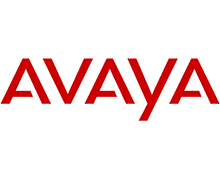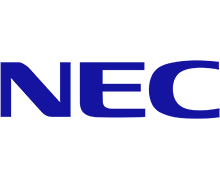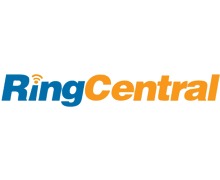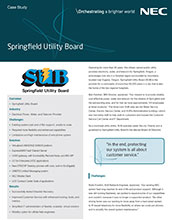UCaaS Managed for You
UCaaS offers organizations an all-in-one, cloud-based communications platform that includes meetings, video, chat, phone, file sharing, and other collaboration features.
But why managed? IT teams are lean and budgets are tight. That’s why we offer a full suite of managed services and workplace solutions delivered in a budget-friendly OPEX model. We create uniform experiences across multiple locations with consistency, speed, and agility through a robust design, deployment, and manage methodology — giving you one partner to guide you from where you are to where you want to be.
Create a digital workplace that employees will embrace and that also ensures successful business continuity.

Top Considerations for Business Continuity
See what you need to consider to maintain business continuity through Managed UCaaS.

The Digital Workplace
Today’s workforce is changing. There is an evolution (and revolution) happening in the workplace that is affecting how and where we communicate.

What’s the Difference?
Learn about the three UC&C options: on-premises, cloud-hosted, and hybrid and which one is best for your organization.
Managed Migration and Services
With more than 40 years experience in deploying in-building IT and communications technologies, a footprint that spans 120 countries, time-tested methodologies, certified technicians, and a proven track record, we have all the managed services needed
to make your move to UCaaS smooth and successful.

Professional
Services
- Consulting/Discovery
- Engineering/Architecture
- Assessments/Surveys
- Project Management

Field
Services
- On-Site Services
- Multisite Deployments
- Staging Services
- Logistics
- On-Site Staffing

Support
Services
- Remote Configuration
- Remote Support
- Service Desk
- Monitoring
- Sunset Services
- E-Waste

Service Level
Management
- Reporting
- Advanced Escalation
- Service Level Agreements
- Customer Success Manager
Black Box UCaaS Partners
Redefine your business UCaaS. Choose from seamless solutions that provide all-in-one voice, video, messaging, meetings, file sharing, and more. We’ll team up with you to find the right solution for your organization from one of our industry-leading
partners.
Click on a partner logo to discover additional resources and information.
Unified Communications & Collaboration
Successful enterprises know their competitive advantage lies in their workforce and today’s workforce is the most diverse ever with four generations working side by side, each with a preferred way of communicating from phone calls to video conferencing.
Related Topics
Read more about the technologies in UCaaS

PRI vs SIP: A 7-Step Comparison
By Brian Trampler, Senior Product and Strategy Manager, Black Box
Good ol' reliable POTS
Back in the "olden days," say the mid to late '90s, the global telecommunications environment seemed so advanced, so high tech. This was the era when communications began moving from analog to digital How we communicated was changing and included new and different kinds of messages (data). Reach deep into your memory bank and think of AOL's "You've Got Mail" audio greeting. (If you don't get the reference, google the Meg Ryan/Tom Hanks movie of the same name.) But, frustratingly to those of us who were eager to jump on the technology bandwagon, the telephony network of the time couldn't keep up and meet our expectations.
For example, I remember purchasing my first modem (33.6 kbps dial-up of course) so I could play chess with my friends on our first "family" computer. It was a big deal. I was cool. My parents weren't. They would pick up another phone (rotary of course) in the house and make a call while I was playing. After a lot of eye-rolling and foot-tapping on my part, my parents would get off the phone so I could re-establish my peer-to-peer connection (complete with the modem's screeching and squawking) and continue the game.
Communications using the good old POTS networks were great. But those networks weren't able to handle the additional compression needs and bandwidth for my modem connection let alone things like better audio quality or video communications.
Enter the Primary Rate Interface (PRI)
This new technology was a way to handle more digital communication channels over a dual pair of copper wires.
With 23 available communication channels (at the time), PRI was a great tool that more than met the needs of the small office. But not necessarily so for larger organizations. If a business wanted to expand, it had to add another full 23 channels instead of smaller increments, whether it needed or planned to use all those lines or not.
At the time, leveraging multiple channels for additional data capabilities was extremely innovative. Today, PRI is considered a very inflexible way of providing communications, especially for larger organizations. Managing multiple PRI connections over multiple locations can not only be expensive with all the physical switch requirements needed at every location, but wasteful.
To ensure every location gets the connectivity and access needed, it's easy to oversubscribe. Add in the data requirements of our cloud connected world, and PRI isn't looking so economical.
Because PRI requires a physical connection and syncing hardware at each customer premise, maintenance and ongoing costs may grow to be prohibitive.
Another consideration to note is that adding more PRI can be a lengthy process and one that is possibly out of your control.
There may be routers or switching technology shortcomings in the physical connection to your location. That means until the physical system in your area is updated you may have to wait for a new circuit. It can take weeks — sometimes months — to get new lines physically added to your location. In some extreme cases, a new circuit just may not be available.
Meet SIP, the (sort of) new kid in town
Much like the move from analog to digital, or from POTS to PRI, the new (but not too new really) kid in town is SIP or Session Initiation Protocol. SIP is a virtual connection instead of a physical one. It enables access to numerous services — not just your phone system. SIP can handle internet connectivity, leverage cloud-based communications and collaboration systems, and enable you to create a hybrid work environment. With SIP, you can give staff the ability to work from anywhere with access to the tools they need without sacrificing security, or having to change infrastructure or even existing phone numbers.
With SIP, your communication line is virtual and moves around as you move. You're not tied to a desk for communications, text, chat, video, or virtual agent responsibilities. You can't separate a PRI into home channels and work channels because it is a physical connection to the communications fabric.
Here's another important consideration when evaluating PRI versus SIP. In our ever-present data and security conscious world, you may find that PRI has a tiny advantage in securing your communications.
Though not impossible, trying to capture and combine data from multiple PRI channels slows down hackers and nefarious agents. In comparison, a SIP connection encrypts the data but doesn't necessarily separate it over multiple channels for transmission. This encrypted data flows through the same virtual connection as all your other communications (also encrypted). This gives you a better way of detecting security flaws and catching the arbiter in the act or preventing attacks altogether using firewalls, VPN (virtual private networks), and applications and procedures that secure network access.
PRI vs. SIP: 7 comparisons
Now that you have all this background knowledge, you can compare the two based on the following seven factors.
1) Cost
While PRI is used mainly for telephony, and separate internet circuits are priced and used for data driven needs, it is more expensive. You also run the risk of oversubscribing based on a future need you can't predict. Plus, you are locked in to minimum terms of 12 months or longer.
With SIP, you can leverage the bandwidth for more than just voice communications. It can carry all of your voice telephony combined with your collaboration needs — video, SMS, data — all combined with classes of service you control and through security you can monitor.
2) Scalability
Adding a new user, branch, or building to your SIP plan is easy and you can scale up or down as business needs dictate. PRI, as mentioned earlier, may require expensive upgrades, and you probably need to oversubscribe in order to prepare for future needs.
3) Reach
Because PRI requires a physical connection at a specific location, you need to plan well in advance if you need to make a move. With SIP, all you need is a simple data handoff. SIP also enables you to reside much closer, via Internet connectivity, to the services you require, virtually anywhere in the world.
4) Usage Transparency
Deciphering your cost is easier when using a pay-as-you-go service with easy-to-understand usage reporting detailing exactly what you're getting for your money. You can often choose different pricing models from your provider based on your needs, as opposed to getting locked into an inflexible, hard-to-understand contract from a legacy PRI provider.
5) Managed Support
Because PRI is a physically wired connection to a circuit, maintenance and repairs must be completed in person by sending a technician onsite or via in-house IT resources. If you have staff familiar with the requirements to service the circuit, you are set — for now. But as the industry moves to more virtual services like SIP, you may lose that institutional knowledge. SIP issues, on the other hand, can typically be diagnosed and repaired remotely making it easier and more cost effective to leverage a managed services provider alongside the SIP connection.
6) Security
SIP connectivity requires network security in the form of firewalls, firmware, authentication, and traffic monitoring. PRI is considered to be more secure, but can be intercepted and is more susceptible to line interference than SIP.
7) Survivability
In case of an outage, SIP has the ability to automatically failover between locations. With PRI, you need to manually move the numbers to a different PRI, which can extend your downtime.
Should you move?
When you compare the two solutions, you can easily see reasons why it makes sense to move to the more modern standards of SIP. But thinking about shifting technology can be extremely daunting. The great news is that Black Box has experience in assisting with SIP migrations. Our project management team monitors and manages every step of the process for you, enabling you to focus on your business while we focus on the technology. For more information, contact us.
If you would like to receive our quarterly newsletter, View from the Edge, you can sign up here.
About Black Box
Black Box® is a trusted IT solutions provider delivering cutting-edge technology products and world-class consulting services to businesses across the globe in every industry. The breadth of our global reach and depth of our expertise accelerate customer success by bringing people, ideas, and technology together to solve real-world business problems.
Where Do We Start?
Work quickly to identify needs and outline a plan of action. Contact a Black Box expert today.






